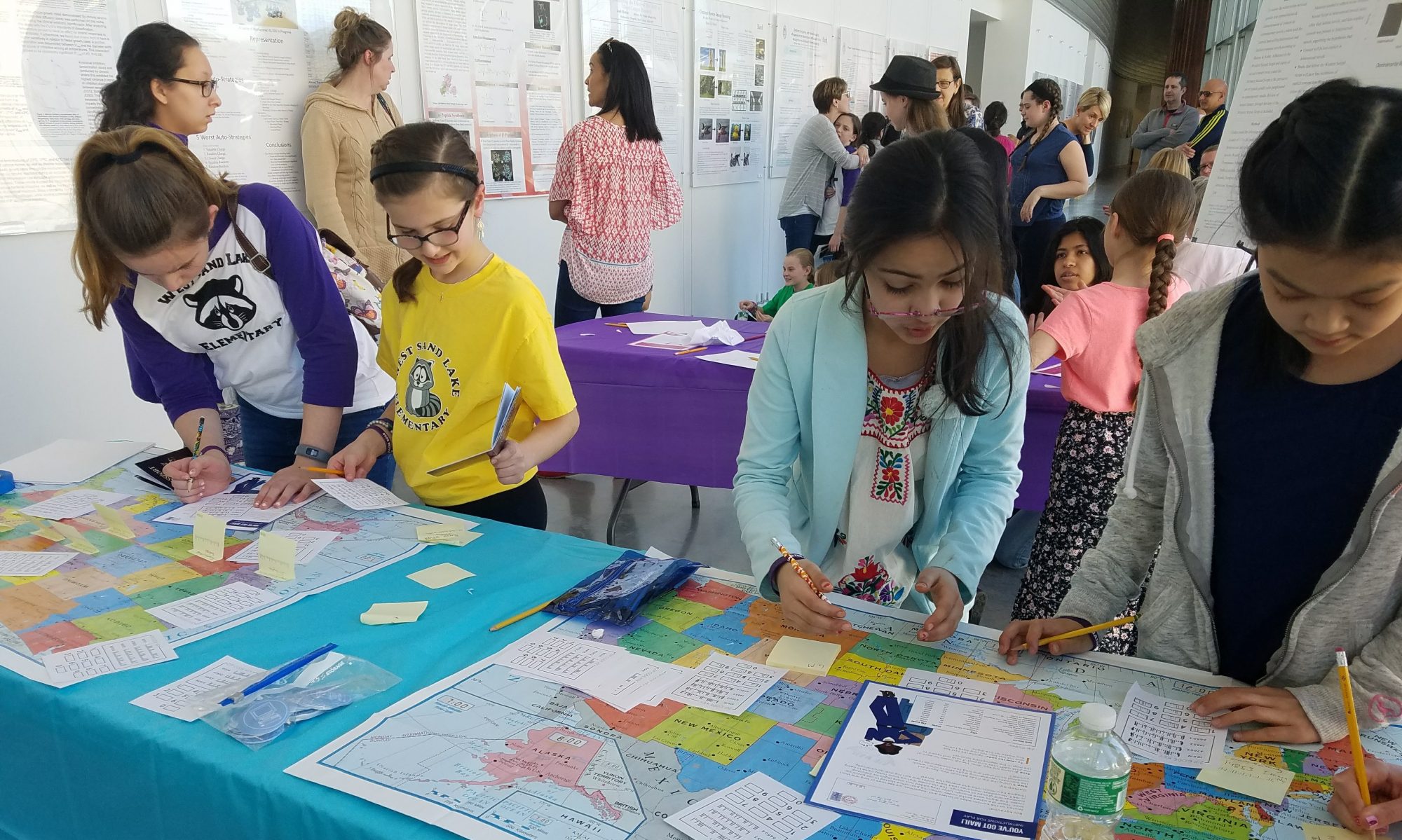- A|BCD
- AB|CD
- AC|BD
- AD|BC
- ABC|D
- ABD|C
- ACD|B
Yesterday my children and I attended the Math Circle at Kingston Library. On the way home I asked them each what their favorite part of the Math Circle was. Jordan said ” When I beat Jeannette at 21 Nim!” followed by her trademark giggle. Michael enjoyed the time the Xingye spent with him explaining square roots and especially liked that Xingye signed his cast in Chinese. Alisa liked playing with the magnetic shapes. I loved all the energy in the room and seeing parents and children having fun using their math skills!
Math Circle at Exploration School
Exploration School is a summer enrichment program housed at the campuses of St. Mark’s School (Junior– grades 4-7), Wellesley College (Intermediate– grades 8-9), and Yale University (Senior– grades 10-12). This summer I had the opportunity to work as an instructor at the Intermediate Program. My ingredients were students with a love of learning, a room to put them, and a bunch of math games and puzzles– my result was Math Circle!
August is Math Fun Month at Sarah Hull Hallock Library in Milton!
I just met with Celeste Ricciardone, the director of the Sarah Hull Hallock Library in Milton. August is officially Math Fun Month at the library!
Added: static pages
I just added our first static page! Normally, posts cycle out and you have to find them in the archives, but not so with a static page. Blogger allows up to 10 static pages, and the first one I added is “Calendar”.
It’s easy to do: from the Posting tab, just choose “Edit Pages”. It’s pretty clear from there.
Here’s a webpage that walks you through it as well: blogger-static-pages
The question now is, what static pages should we add? Please comment on this post with your suggestions for static pages.
Writing Mathematics on our Blog with Texify!
I just learned today from Mary O’Keeffe how to include mathematics on blogger. It’s not native, but does the trick, and especially a little useful if you know a little LaTeX, the mathematical typesetting language.
Let’s say you want to typset the quadratic formula. In LaTeX, you would write this as
Now just visit the texify web site: Texify and insert the LaTeX code where specified. The Texify website will then automatically generate html code for your formula, resulting in:

Set
I think that SET is my favorite Math Circle game. Not only is it challenging and fast-paced, but it has a great community aspect to it: players can join in during the middle of the game, or choose to play for a few minutes. A friend of mine found a SET app on her phone the other day, so we were playing while at a local Open-Mic night. A second friend saw it, played with us until she found a SET, and then returned to her group. It’s that fast, and that fun.
Another way to play SET is to visit this website. There are 12 cards on the table and 6 SETs that you must find; every day there is a new puzzle. How long does it take you to find them all? My record is 42 seconds–can you beat that?
Calendar Added
I just added the Bard Math Circle calendar to this blog. It’s in the right column, in agenda form. I added a gadget, and searched for one that adds a calendar. Easier than I thought it would be!
This means that we should start populating the calendar with Fall semester events.
The Bard Math Circle Logo
We now have a logo! Featured on the right side of this page, you’ll see a version of the Fibonacci Spiral, designed by artist David Levine. The Fibonacci Spiral consists of squares, each with a 90 degree arc, arranged in a spiral form. The dimensions of the rectangle are consecutive Fibonacci numbers, and thus approximate the Golden Ratio.
We’re looking forward to featuring this logo on all Bard Math Circle materials!





